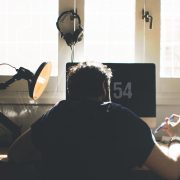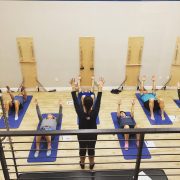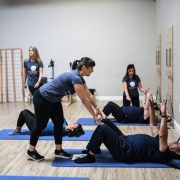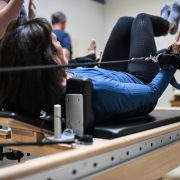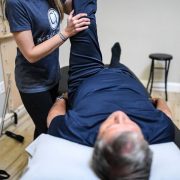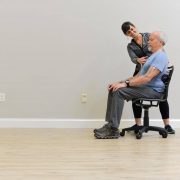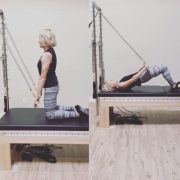Shoulder Pain not Going Away? This could be why…
Whether it’s shoulder pain, neck pain, back pain, or knee pain that you’re dealing with — if you have a nagging pain or injury that just won’t go away no matter what you try, it’s a clue that you’re missing something.
We see this ALL the time in our office with shoulders.
Folks just like you come to us wondering why their shoulder still hurts after trying ice, heat, rest, physical therapy, massage, and every possible shoulder exercise you could imagine.
The pain either goes away temporarily, or sometimes it gets WORSE!
When it comes to shoulder pain, it’s critical that you know for certain if the pain is actually coming from your shoulder, or somewhere else. If not, you risk trying to fix the wrong problem… and that explains EXACTLY why your shoulder pain isn’t going away.
So… if your shoulder pain isn’t caused by your shoulder — where is it coming from?
The most common culprit is actually your NECK. Below are a few key signs to help you figure out if that’s the case…
(PS – we’re doing an online workshop on this topic in just a few weeks.)
Where is your pain?
When your pain is coming from your shoulder, the pain will always be localized to your shoulder alone. True shoulder pain is felt directly in front of your shoulder, directly on top, or in a more involved shoulder problem (like a rotator cuff injury) you might feel some achiness down the side of your arm… but it will never go below your elbow.
If the pain goes past your elbow and into your forearm or hand, or radiates above your shoulder into your neck (the upper trap area), or if you feel it deep inside of your shoulder blade in your mid-back, odds are pretty good that you’re dealing with a neck problem and not just a shoulder problem. This could be the reason why your shoulder pain isn’t going away.
Do your symptoms involve numbness, tingling or burning?
These are signs of nerve compression or irritation. If that’s happening, it’s likely coming from your neck – and could be due to a bulging disc or a restricted/faulty movement pattern that is irritating nerve roots in your neck. An isolated shoulder problem typically does NOT involve nerve root compression or irritation. This is much more common in a problem related to your neck, and if that’s what’s happening, you will feel symptoms into your shoulder, shoulder blade, or even down into your arm. What’s particularly misleading is that it’s entirely possible to feel all these nerve symptoms and not actually feel anything localized to your neck. This is a big reason why shoulder pain caused by a neck issue gets missed by so many health practitioners.
Have you lost mobility or range of motion?
Lack of mobility and stiffness are common symptoms associated with a rotator cuff injury or the dreaded “frozen shoulder.” If your neck moves well and is pain free, but your shoulder is stiff and immobile, odds are good that the problem is actually in your shoulder and you just haven’t found the right treatment approach yet. BUT… if you have a stiff and painful neck, and you lack mobility in your shoulder, then it’s absolutely imperative that you investigate your neck. If your care provider only focuses on stretching and improving your shoulder mobility, and never bothers to look at your neck, it’s possible you could be missing a key component to full recovery… and that’s why your shoulder pain keeps coming back.



